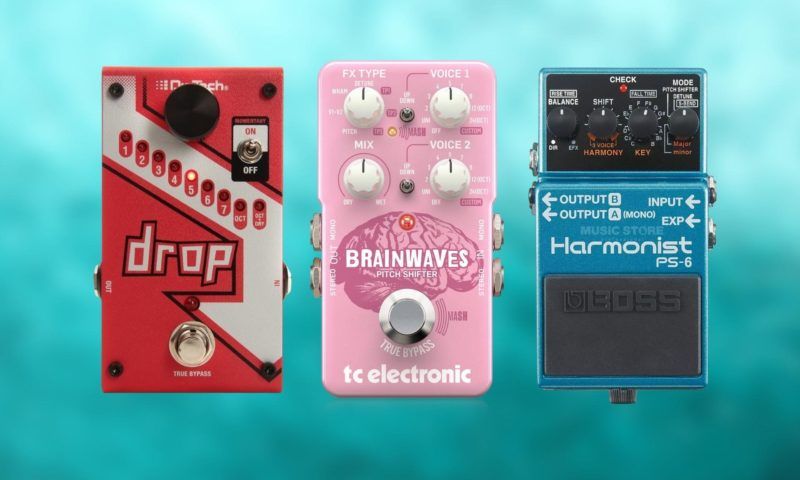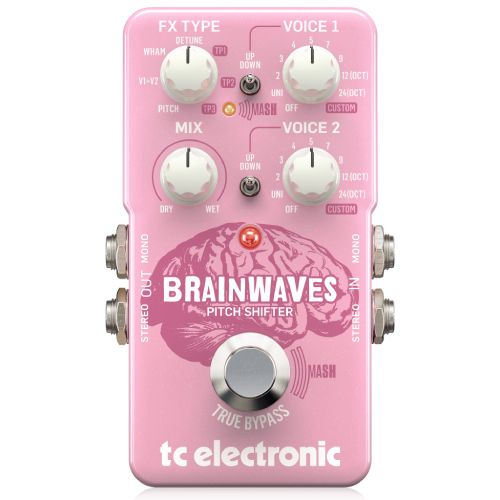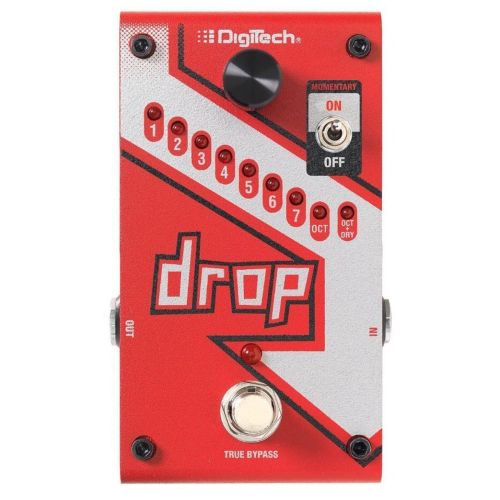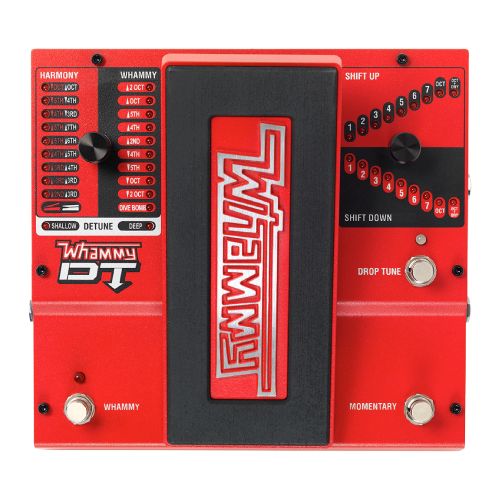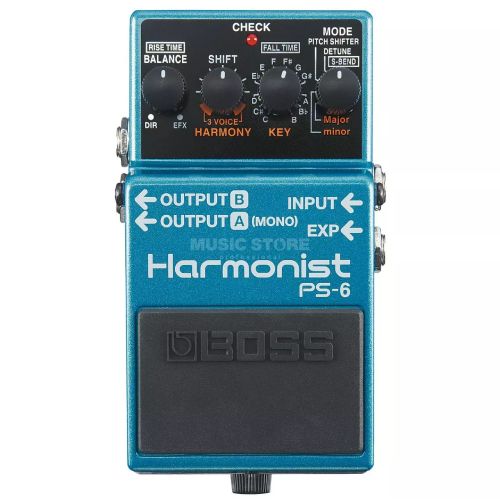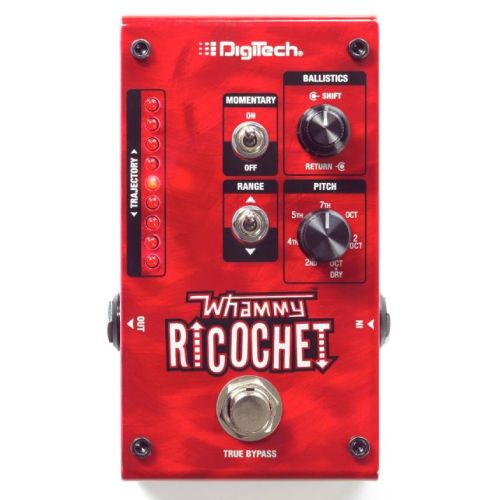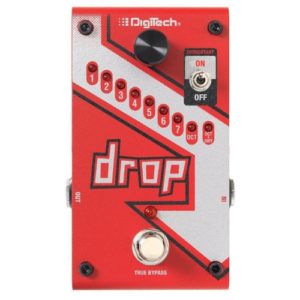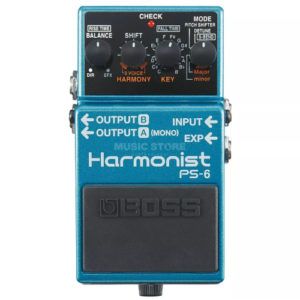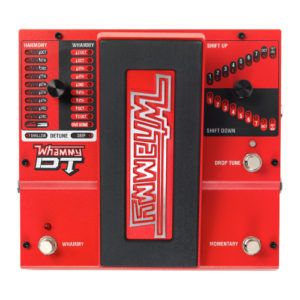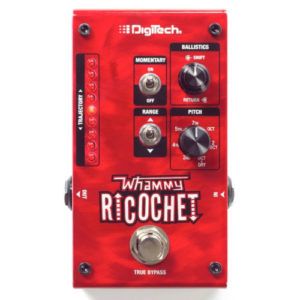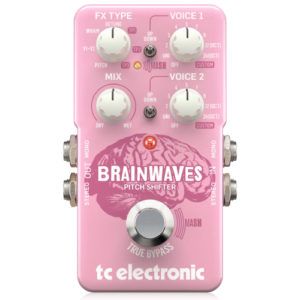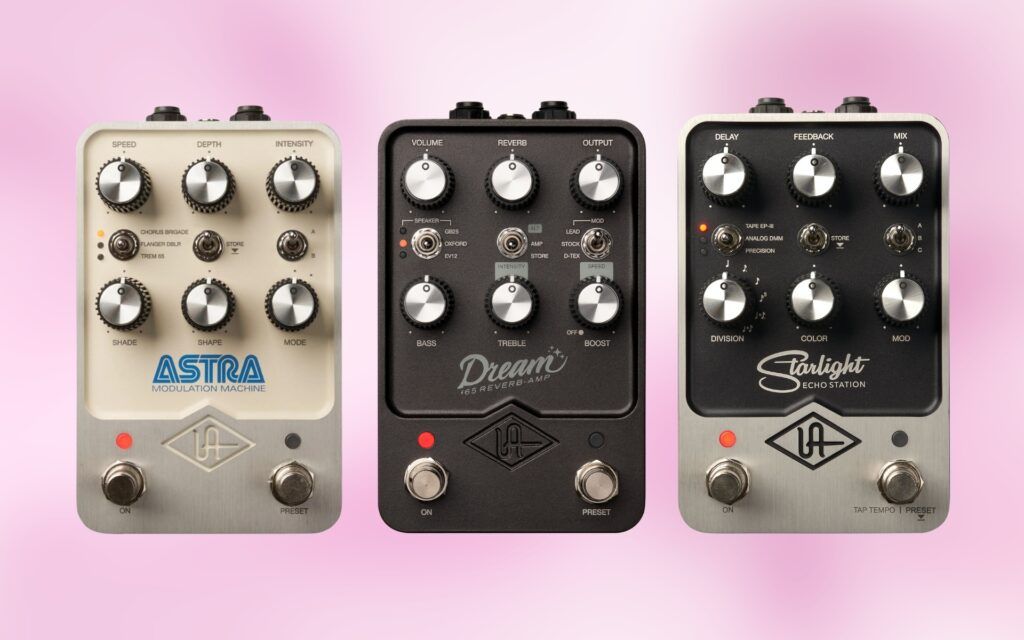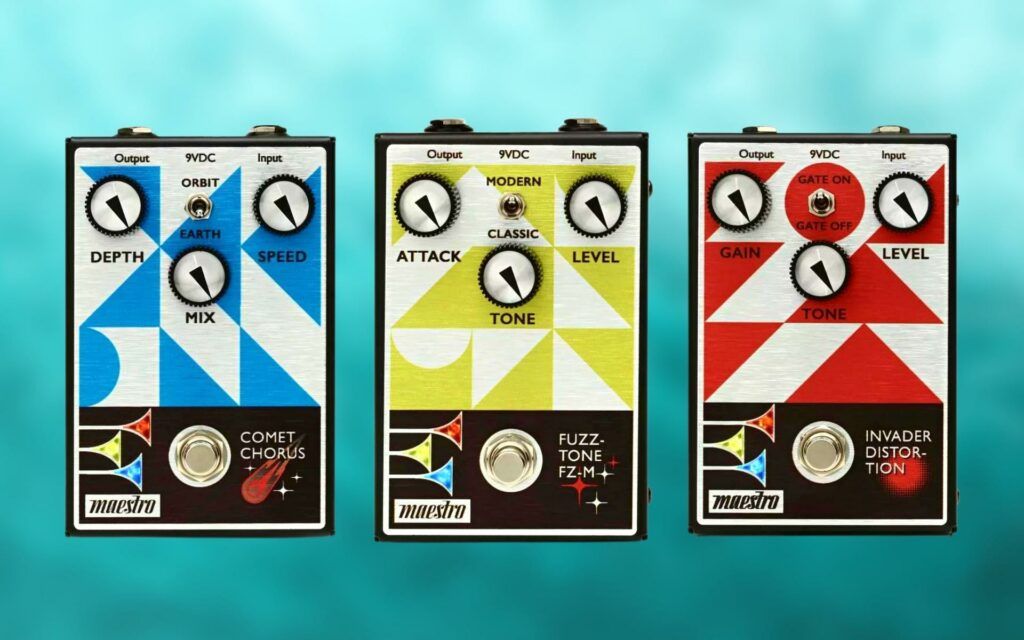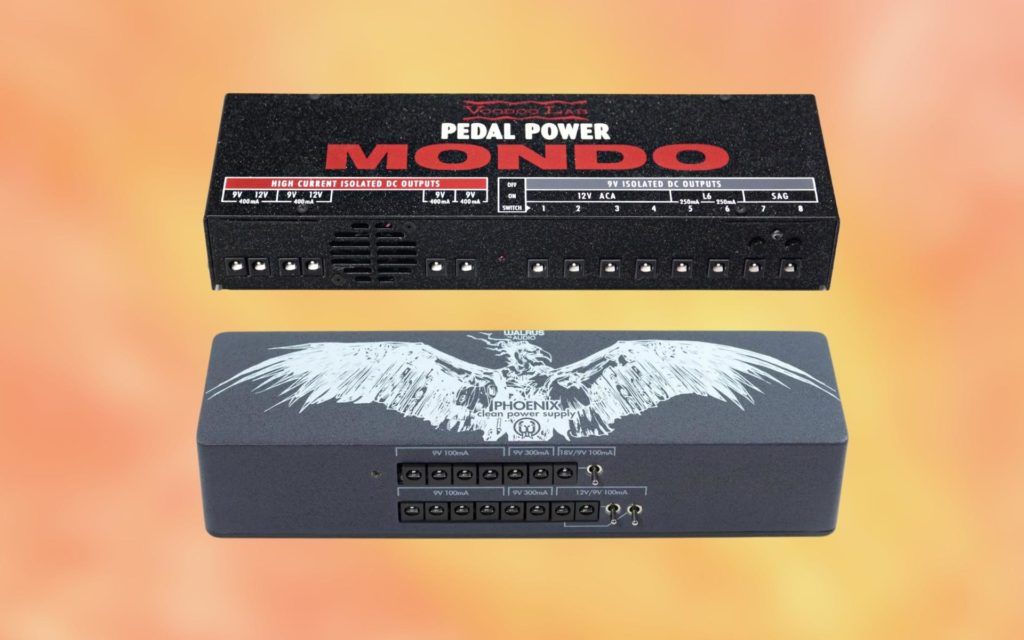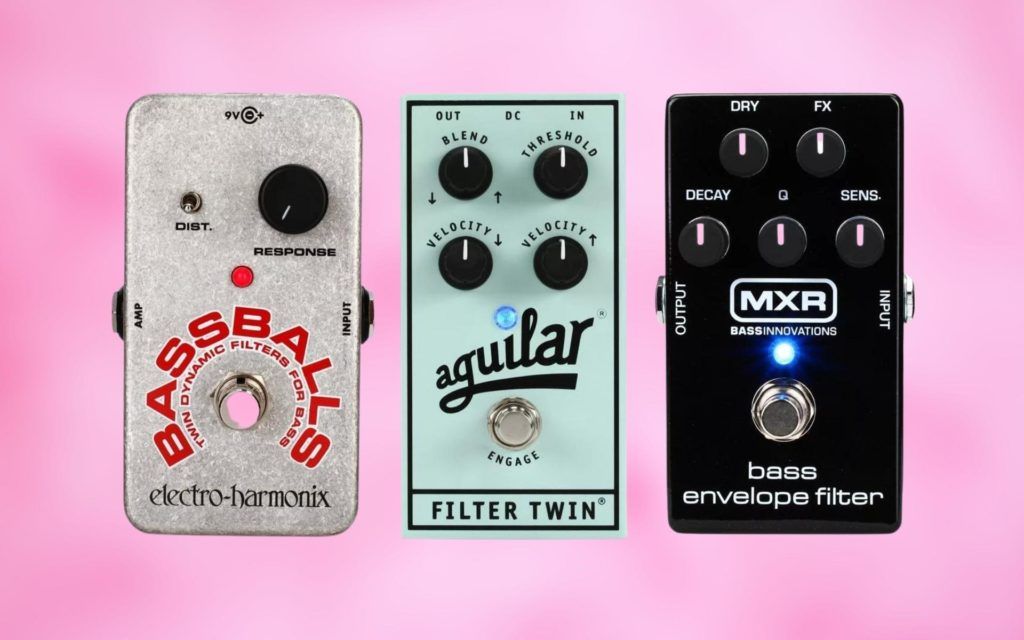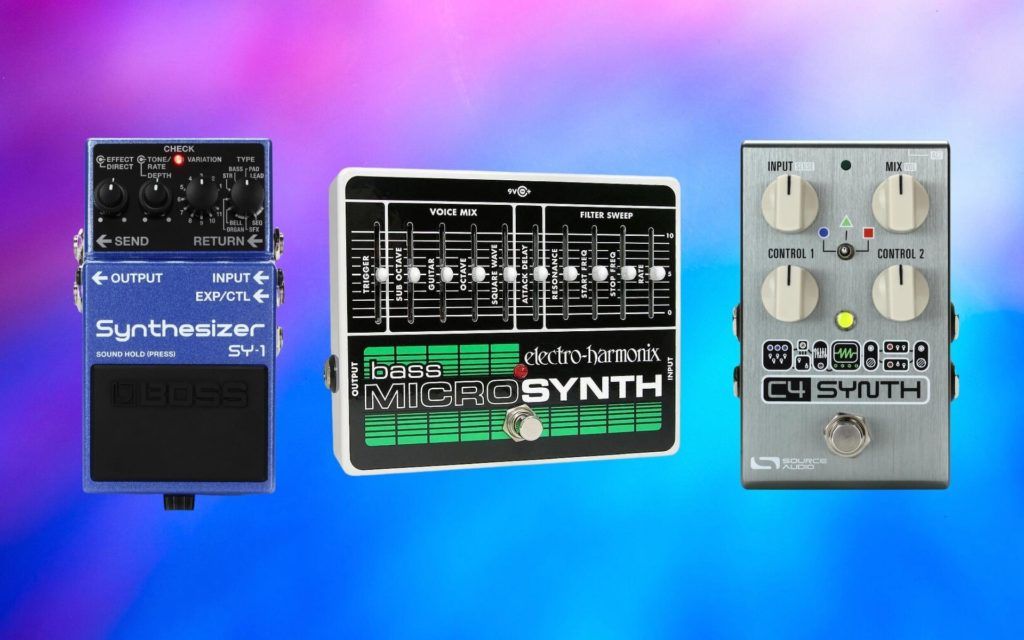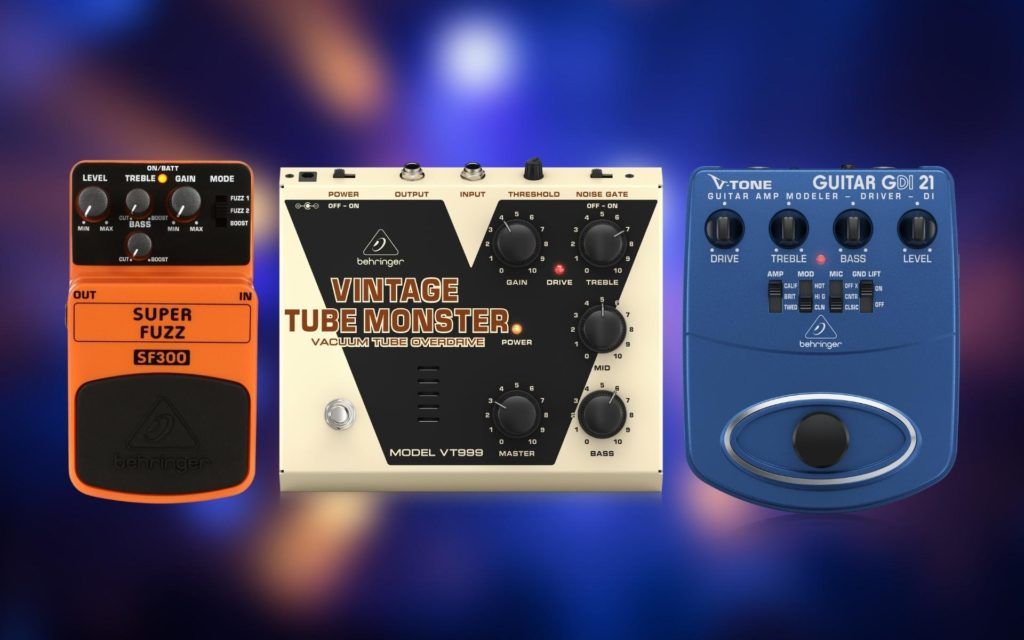We review products independently and our recommendations are genuine. If you purchase through links on our site, we may earn an affiliate commission. Learn More
Drop tune pedals allow guitarists to access these lower notes without needing to adjust their tuning pegs. These devices make it easy to quickly tune down during a performance by pressing a footswitch.
Whether you’d like to experiment with lower notes, or you want to make your guitar sound more like a bass, these pitch-based modulation pedals offer the perfect solution.
Drop tune pedals for guitar come with many different features, controls, and capabilities. They’re useful tools both in live performance settings and in the recording studio. In this guide, you can find everything you need to know about these transformative devices.
The drop tune guitar pedals featured in this guide vary in terms of their complexity, and their size. These options are all fantastic options that will enable you add this transformative, unique effect in your arsenal.
In a Rush’ Round-Up
How We Tested
To identify the best drop tune guitar pedals, we put the devices through a series of tests. The value for money was determined by assessing the versatility of the drop tuning effect, its compatibility with other effects, and the number of customizable controls that are included.
We then moved on to testing the robustness of the housing, to determine whether the pedal is likely to be able to withstand the inevitable wear and tear of performing, rehearsing, and recording.
Finally, we took note of the way the drop tune pedals sounded when they were played through a tube amp, solid-state amp, and directly recorded through an interface.
The reviews below present the best drop tune pedals that we found from this process.
Drop Tune Pedal Reviews
DigiTech Drop Polyphonic Drop Tune Pitch-Shift Peda
DigiTech Drop Polyphonic Drop Tune Pitch-Shift Peda Review
DigiTech has a reputation for pushing the boundaries of modulation effects. The Drop pedal is amongst their most innovative creations, allowing guitarists to lower their pitch with precision.
The design of the DigiTech Drop Polyphonic pedal is very simplistic, which makes it incredibly easy to operate. The LED display allows you to see which setting is active so that you can choose the exact semitone to drop your tuning by.
Physically, this pedal is built like a tank. It makes sense that DigiTech would use such a durable, solid chassis, as the footswitch is likely to be pressed constantly to change settings during a performance.
Another standout feature of the DigiTech Drop is the choice of footswitch operation. By holding down the switch, you activate the momentary or latching mode, which makes it easier to lock in your preferred settings or have the freedom to switch things up instantly.
Some pitch shifter pedals can sound a little artificial when you reach their limits, but the Drop pedal sounds clear and authentic even when you drop the tuning by a full octave.
Features
- Drops by 1 octave
- True bypass switching
- Nine drop tune settings
Pros
- Great for playing in alternative tunings
- Doesn’t sound muddy even on the lowest pitch settings
- Preserves signal strength
Cons
- Can cause additional harmonics when used with other effects
BOSS PS-6 Harmonist Pedal
BOSS PS-6 Harmonist Pedal Review
The Boss PS-6 Harmonizer pedal embodies all of the qualities traditionally associated with Boss effects. It’s incredibly roadworthy, easy to operate, and most importantly, produces a range of high-quality sounds.
To access the drop tuning effect, you simply turn the rotary control found at the top right of the pedal. This control can also be used to select harmony, and pitch shifter modes.
Before using the detuning effect, you can choose the key that you are playing guitar in, then adjust the balanced setting to blend the wet and dry signals. This provides you with complete control over the prominence of the drop tuning effect in the output.
Boss has included two outputs on this pedal so that the wet and dry signals can potentially be split and sent to separate amplifiers or an effects loop. There’s also an input specifically for an expression pedal.
The main advantage of the PS-6 compared to standalone drop tune pedals is that it can also be used to raise the pitch of your guitar in a number of interesting ways.
Features
- 3 detune voice settings
- 4 octaves of pitch bending
- Includes a harmonizer effect
Pros
- Four pitch-based effects in one pedal
- Very easy to operate
- Durable construction
Cons
- Requires hand operation to change settings
DigiTech Whammy DT Drop Tuning Pedal
DigiTech Whammy DT Drop Tuning Pedal Review
My first impression of the Whammy DT by DigiTech was that it seemed complicated and would likely to difficult to operate, but I soon realized that despite the crowded display, this pedal makes drop tuning a guitar incredibly easy.
Featuring the classic Whammy rocker plate design which resembles an expression or volume pedal, the DT allows you to preselect your desired interval. The velocity of the drop is impacted by the speed that you push the rocker plate down and back up.
If you’ve ever used a tremolo arm on a guitar before, you’ve probably experienced the sudden pitch-shifting you can achieve by pushing it in towards the body.
The DigiTech Whammy DT is essentially like having a more accurate and versatile tremolo arm at your disposal. However, you can achieve the drop tuning effect without interrupting your guitar playing.
There’s also a momentary latch switch installed on the pedal, which can be used to stay on a specific setting until you deactivate it. This means that you can consistently play at a certain drop tuning, or switch things up halfway through a song.
Features
- Drop tune by up to 1 octave
- Momentary footswitch
- Rocker plate control
Pros
- Produces a wide range of pitch-based effects
- Great for sudden drops and dive bombs
- Precise detuning
Cons
- Larger than most stompboxes
DigiTech Whammy Ricochet Pitch Shift Pedal
DigiTech Whammy Ricochet Pitch Shift Pedal Review
Although the Whammy Ricochet lacks the large rocker plate that made the original model stand out, I was hugely impressed that DigiTech has managed to pack all of the features and settings into this stompbox,
The LED display makes it easy to monitor the trajectory of your drop tuning or upwards pitch-shifting, even when playing on a dimly lit stage. By using the range switch, you can set the interval that the pitch will drop to when the pedal is active.
Another noteworthy aspect of this pedal is the adjustable control which affects the amount of time it takes for the pitch shifting to begin, and end. This is essentially like an attack and release setting on a synthesizer, but it solely impacts the speed of the pitch alterations.
I was also pleased to discover that DigiTech had carried the momentary latch feature from the original Whammy pedal. This setting is great for creating ambient soundscapes with your guitar and altering the pitch in real-time.
Features
- Pitch bends up or down by 2 octaves
- 7 individual pitch intervals
- True bypass switching
Pros
- Compact design
- Clear LED display
- Monetary switch and latching modes
Cons
- No expression pedal input
TC Electronic Brainwaves Pitch Shifter Pedal
TC Electronic Brainwaves Pitch Shifter Pedal Review
It seems unfair to label this pedal as a mere drop tuner or a pitch shifter when in reality it is best described as a multi-fx unit. Housing four unique pitch effects, the Brainwaves is an example of TC Electronics’ ability to think outside the box when designing their pedals.
To match its eccentric aesthetical design, the TC Electronic Brainwaves pedal contains four main rotary controls. Firstly, you choose the type of effect you’d like to use, from detuning, whammy, and pitch shifting options.
Then you can tweak every aspect of the effect using the remaining three parameters. One of the best things about this pedal is that it allows you to combine two voices simultaneously, so you can add drop tuning into the mix with harmonies.
Another interesting aspect of the Brainwaves pedal is that it features both true bypass switching and buffered circuitry. This means that depending on where you place the pedal in your signal chain you can choose the best option for preventing dreaded tone suck when it is disengaged.
Features
- 3 pitch effects in one pedal
- Switchable true bypass or buffered operation
- Dual inputs and outputs
Pros
- Drop tune by 2 whole octaves
- Great for combining different modulation effects
- Blends your dry and processed guitar tone
Cons
- A wide range of adjustable controls may take some time to get used to
Drop Tune Guitar Pedals Buyer’s Guide
Drop tuning is a method used by guitarists to allow their instruments to reach lower pitches. Popular in genres such as metal and heavy rock, drop tuning is usually achieved by tuning the low E string down to a D, C, B, or even lower into double drop tunings.
The main difference between using a drop tune pedal and manually tuning your strings down is that the pedal will cause all of the strings to be tuned down by a certain amount rather than affecting one string at a time.
This means you can’t achieve alternative tunings like drop D using these pedals, but you can cause the strings to instantly detune by a predetermined value, which some would argue is more useful.
Things to consider when buying
Consider the octave range
Guitar drop tune pedals take the original note of a guitar, and lower the pitch by a predetermined interval. Some can drop the tuning down by 3 octaves, while others may be more limited.
Think about the control layout
If you’re the type of guitarist who likes to plug in and play without having to mess around with various settings on your effects, a drop tune pedal with a simple, minimalist layout would be a good choice. Alternatively, if you enjoy the process of tweaking settings to establish your sound, you should choose a more complex drop tune pedal.
Assess the space you have available
Drop tune guitar pedals are generally quite bulky, compared to other popular stompbox effects. If you have limited space available on your pedalboard, it might be worth choosing a compact drop-tune pedal to avoid overcrowding.
Consider additional features
Like most modulation-based effects, drop tune guitar pedals often house features and parameters that can be used to create interesting sounds.
How Drop Tune Pedals Work
Drop tune guitar pedals, like pitch shifters, are devices that alter the frequencies and notes of an input signal.
Most drop-tune pedals work by tracking the original signal of a guitar, specifically the harmonic content. Then, the pedal outputs a lower note than the one that was originally played.
Some drop tune pedals will exclusively output the signal that has been altered by the effect, while others are capable of blending that signal with the original, dry sound.
The way that drop tune pedals work is very similar to pitch shifters and octave pedals, but the key difference is that they cause the pitch to suddenly descend to a specific note, rather than adding other notes into the signal.
Common Controls and Parameters
Although drop tuning pedals are quite complex in terms of the way they produce the effect, they’re often very easy to use.
Most of these pedals have a footswitch, which activates the drop tuning effect. Some include momentary and latching switch settings, which cause the effect to either happen suddenly or remain on even when you take your foot off the pedal.
Before the drop tuning effect is applied to the signal, the number of semitones that the pedal will transpose the original note by must be determined.
Some drop-tune pedals have rotary controls that allow you to select the number of semitones that you would like to transpose down to, while others include buttons that are used for the same purpose.
Blend controls are used to impact the amount of dry signal that remains in the output along with the drop-tuned signal.
Polyphonic vs. Monophonic Drop Tune Pedals
If a drop tune pedal is polyphonic, this means it can play several notes simultaneously with the pitch-altering effect. Monophonic pedals are only capable of applying the effect to one single note at a time.
If you want to apply the drop tuning effect to chord sequences or melodies that use two or more notes, you’ll need a polyphonic pedal.
Using a monophonic drop tune pedal is better suited to bassists, or guitarists who predominantly play single-note riffs. Drop tuning while playing chords produces a very unique sound that can’t be replicated in any other way.
Drop Tune Pedal FAQs
What Is The Difference Between Drop Tune and Pitch Shifter Pedals?
Drop tune and pitch shifter pedals are often categorized together, along with harmony and sometimes octave shifter pedals. This is because these devices all work by tracking the original signal from an instrument and then reproducing it with an altered pitch.
There is, however, an important difference between drop tune and pitch shifter devices.
Drop tune pedals are designed to suddenly lower the pitch of the instrument, while pitch shifters cause each note to either shift up or down and remain there until the pedal is turned off.
Should I Use a True Bypass or Buffered Drop Tune Pedal?
Buffered and true bypass pedals are both designed to preserve the integrity of your signal, but they achieve this in different ways.
A true bypass drop tune pedal works by allowing the signal to pass through the pedal without being altered when the device isn’t being used. This prevents the dreaded “tone suck” from occurring.
Buffered drop tune pedals boost the signal to ensure that it stays at an optimal level. These pedals are generally better to use if you have a particularly long cable run throughout your signal chain.
Where Does a Drop Tune Pedal Go in the Signal Chain?
It is recommended that a drop tune pedal should be positioned as early in the signal chain as possible – after any dynamic pedals like compressors or EQ.
This will ensure that the signal going into the drop tune pedal is as clean as possible, and it won’t be muddied by other modulation or timing-based effects.

